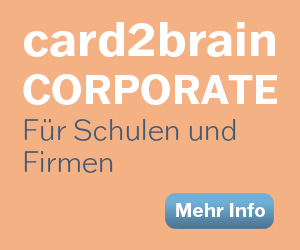Accounting - 14
Financial Accounting // 10th edition// Ward, Thomas, Farrell
Financial Accounting // 10th edition// Ward, Thomas, Farrell
Kartei Details
| Karten | 27 |
|---|---|
| Sprache | English |
| Kategorie | Finanzen |
| Stufe | Universität |
| Erstellt / Aktualisiert | 08.11.2025 / 08.11.2025 |
| Weblink |
https://card2brain.ch/cards/20251108_accounting_14
|
| Einbinden |
<iframe src="https://card2brain.ch/box/20251108_accounting_14/embed" width="780" height="150" scrolling="no" frameborder="0"></iframe>
|
current assets
These are assets that are expected to be realized in the entity's normal operating cycle. They are held primarily for the purpose of trading and are expected to be realized within 12 months of the reporting period end or are cash and cash equivalents (unl
non-current assets
Any asset not qualifying as a current asset.
tangible assets
Assets that can be seen and touched (they are tangible in nature), for example a motor vehicle or property.
intangible assets
Separately identifiable non-monetary assets that do not have physical substance. Examples include goodwill, patents, trade-marks, copyrights, fishing licences, milk quota, franchises, customer or supplier relationships, mortgage servicing rights, customer
capital expenditure
Expenditure on non-current assets that gets the asset to its initial working order and that improves the asset. The improvements are expected to increase the revenue generating abilities of the asset (or reduce the running costs associated with the asset)
revenue expenditure
Expenditure that is incurred for the purposes of the trade of the business or to maintain the existing earning capacity of existing assets. This appears in the statement of profit or loss.
financial assets
Cash, cash equivalents, equity in another firm or a contractual right to receive cash, cash equivalents or equity
accumulated depreciation
Accumulated depreciation is a cumulative record of the yearly depreciation of property, plant and equipment that has been allocated (expensed) to the statement of financial performance.
carrying amount
The recorded cost (or revalued amount) of property, plant and equipment less the corresponding amount on the accumulated depreciation account.
written-down value
This is otherwise known as the net book value, carrying amount or book value. It represents the recorded cost (or revalued amount) of property, plant and equipment less the corresponding amount on the accumulated depreciation account.
net book value
This is otherwise known as the book value, carrying amount or written down value. It represents the recorded cost (or revalued amount) of property, plant and equipment less the corresponding amount on the accumulated depreciation account.
fair value
The amount for which an asset can be exchanged between knowledgeable, willing parties in an arm’s-length transaction, i.e. market value.
recoverable amount
The higher of fair value and value in use.
value in use
The present value of the cash flows, or other economic benefits, that an entity expects to derive from use of an asset and from its ultimate disposal.
useful (economic) life
The useful (economic) life can be measured in time or in output. It represents the period over which property, plant and equipment is expected to be available for use by an entity; or the number of production or similar units expected to be obtained from
depreciation
The allocation of the cost of property, plant and equipment over the accounting periods that comprise its useful economic life to the business, according to some criterion reflecting the amount which is ‘used up’ or ‘consumed’ in each of these periods.
depreciable amount
The cost of an asset, or other amount attributed to that asset, less its residual value.
consumption
Includes the wearing out, using up or other reduction in the useful economic life of a tangible non-current asset.
obsolescence through technological change
Refers to the situation where a new model of the asset, which is significantly more efficient or performs additional functions, comes on to the market.
obsolescence through demand changes
Occurs when there is a substantial reduction in demand for the firm’s product because of, for example, technological advances in competitors’ products.
residual value
Refers to the estimated proceeds of the sale of the asset at the end of its useful life to a business.
straight-line/fixed instalment method
A method of calculating depreciation which gives the same charge for depreciation in each year of an asset’s useful economic life. It is otherwise known as the fixed instalment method.
reducing balance method
Method of calculating depreciation which results in a decreasing annual charge for depreciation over the useful economic life of the asset.
sum of the years’ digits method (sum of digits)
A method of calculating depreciation which gives a decreasing annual charge for depreciation over the useful life of the asset that is similar to but not the same amount as the reducing balance method. The depreciation expense is computed by multiplying t
depreciation expense
The amount of an asset’s cost which is allocated from the statement of financial position to the statement of profit or loss to match against the revenue that the asset generates. It is revenue expense and is a periodic charge.
diminishing/reducing balance method
Otherwise known as the reducing balance method. This method gives a decreasing annual charge for depreciation over the useful life of the asset. It is calculated by applying a set percentage to the opening written down value of the asset. As the opening w
loss on sale
The amount by which the written down value of an asset exceeds the value received on the sale of the asset.












